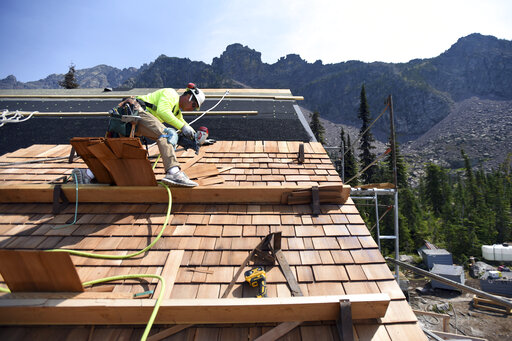At least 14 construction defect lawsuits have been filed against developers and subcontractors that built thousands of Nevada homes.
Two insurers issued commercial liability policies to cover such claims, but they didn’t agree on whether a prior-damage clause in one of the policies excluded coverage. Two U.S. District Court judges in Las Vegas created a legal conundrum by issuing conflicting opinions as to whether the insurer or the insured bore the burden of proving that coverage was owed under an exception to that exclusion.
The Nevada Supreme Court helped settle that question on Thursday by ruling that an insured must prove that an exception in the policy language does not exclude coverage. The high court also decided that the insured can use extrinsic evidence — meaning testimony or documents not in the pleadings — to decide whether the exception applies.
The Supreme Court said in a unanimous decision that Nevada law is silent on the question, but under contract law, the burden always falls on one party or the other to produce evidence to persuade a judge.
“In Nevada, the burdens of production and persuasion rests with the insured, who has the initial burden of proving that the claim falls within the policy coverage,” the court said in a unanimous opinion, citing a previous ruling. “The assignment of the burden of proof to the insured to prove that the claim potentially falls within the exception to the exclusion, which in effect re-establishes coverage, is in alignment with these principles as well.”
The question came to the Supreme Court via a certified question asked by the federal 9th Circuit Court of Appeals, which is seeking to resolve the conflicting rulings by the U.S. District Court judges. Federal courts rely on state courts to resolve unsettled questions in state law.
Nevada homeowners brought 14 construction defect lawsuits against developers in Nevada state court from 2010 to 2013. The developers sued their subcontractors as third-party defendants. The subcontractors turned to Zurich American Insurance Co. to defend them because Zurich units had insured them while construction was underway.
Zurich obliged and reached settlements with the subcontractors, but also filed suit against Ironshore Specialty Insurance Co. for indemnification and defense.
Ironshore had issued policies to the subcontractors after construction was complete. The carrier argued that no coverage was owed because of a provision in the policy that excluded coverage for any damage that occurred before the policy was issued.
Zurich countered that the exclusion for pre-existing damage had an exception that covered any sudden and accidental damage.
On Oct. 12, 2017, U.S District Court Gloria M. Navarro ruled in Zurich’s favor, finding that the prior-damage exclusion did not apply because the policies did not state when the damage occurred. She ordered Ironshore to share half the cost of the subcontractors’ lawsuits, which amounted to $488,233.
But five months later, U.S. District Court Judge Jennifer A. Dorsey granted summary judgment in a separate but nearly identical lawsuit in favor of Ironshore. She found that damage that occurred before the policy was issued was clearly excluded and the exception for sudden and accidental damage did not apply.
The Supreme Court said that Navarro’s ruling implicitly concluded that the insurer had the burden of proving that the exception to the exclusion applied, while Dorsey’s order implicitly concluded that the burden rested on the insured. Dorsey made the right call, the high court decided.
The opinion says that a majority of courts that have ruled on the question about who has the burden of proving whether an exception to a policy applies have denied that the burden lies on the insured. Nevada law requires that the insured establish coverage under a policy.
“We hold that the majority rule, which places the burden on the insured, to, in essence, reestablish coverage where it would not otherwise exist, accords with these principles,” the opinion says.
Was this article valuable?
Here are more articles you may enjoy.


 Munich Re: Insured Losses From Wildfires, Storms and Floods Hit Record High
Munich Re: Insured Losses From Wildfires, Storms and Floods Hit Record High  Musk’s xAI Faces California AG Probe Over Grok Sexual Images
Musk’s xAI Faces California AG Probe Over Grok Sexual Images  California Governor Seeks $200M to Replace EV Tax Credits Cut by Trump
California Governor Seeks $200M to Replace EV Tax Credits Cut by Trump  Palantir Poaching Suit Called ‘Scare’ Tactic by Ex-Employees
Palantir Poaching Suit Called ‘Scare’ Tactic by Ex-Employees 